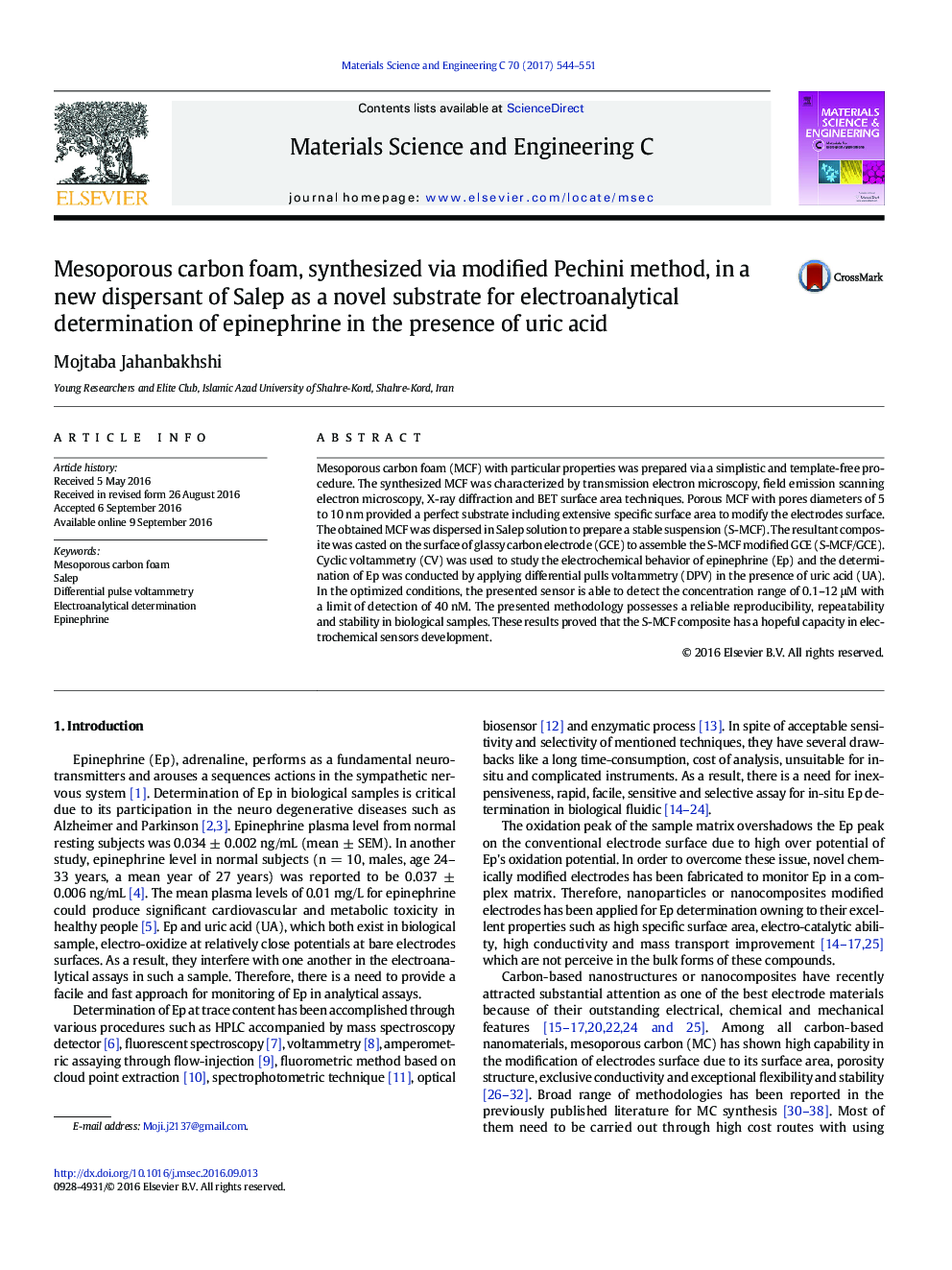| Article ID | Journal | Published Year | Pages | File Type |
|---|---|---|---|---|
| 6481397 | Materials Science and Engineering: C | 2017 | 8 Pages |
â¢The MCF was synthesized via low-cost and simple modified Pechini method and dispersed in the Salep solution to obtain S-MCF suspension.â¢The obtained suspension was casted on the GCE surface.â¢The modified electrode was applied for determination of Ep in the presence of UA.â¢This sensor showed low detection limit and wide linear responding range to determination of Ep.â¢The S-MCF/GCE showed acceptable performance in pharmaceutical and biological analysis.
Mesoporous carbon foam (MCF) with particular properties was prepared via a simplistic and template-free procedure. The synthesized MCF was characterized by transmission electron microscopy, field emission scanning electron microscopy, X-ray diffraction and BET surface area techniques. Porous MCF with pores diameters of 5 to 10 nm provided a perfect substrate including extensive specific surface area to modify the electrodes surface. The obtained MCF was dispersed in Salep solution to prepare a stable suspension (S-MCF). The resultant composite was casted on the surface of glassy carbon electrode (GCE) to assemble the S-MCF modified GCE (S-MCF/GCE). Cyclic voltammetry (CV) was used to study the electrochemical behavior of epinephrine (Ep) and the determination of Ep was conducted by applying differential pulls voltammetry (DPV) in the presence of uric acid (UA). In the optimized conditions, the presented sensor is able to detect the concentration range of 0.1-12 μM with a limit of detection of 40 nM. The presented methodology possesses a reliable reproducibility, repeatability and stability in biological samples. These results proved that the S-MCF composite has a hopeful capacity in electrochemical sensors development.
